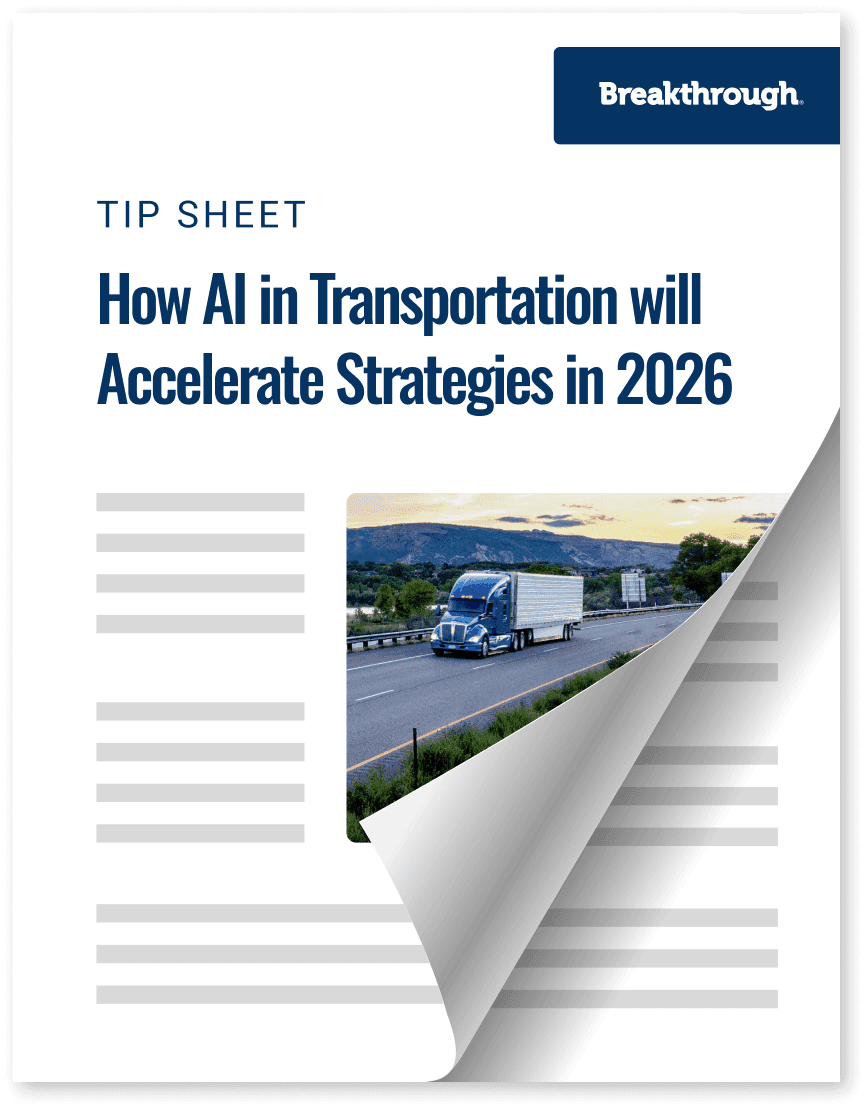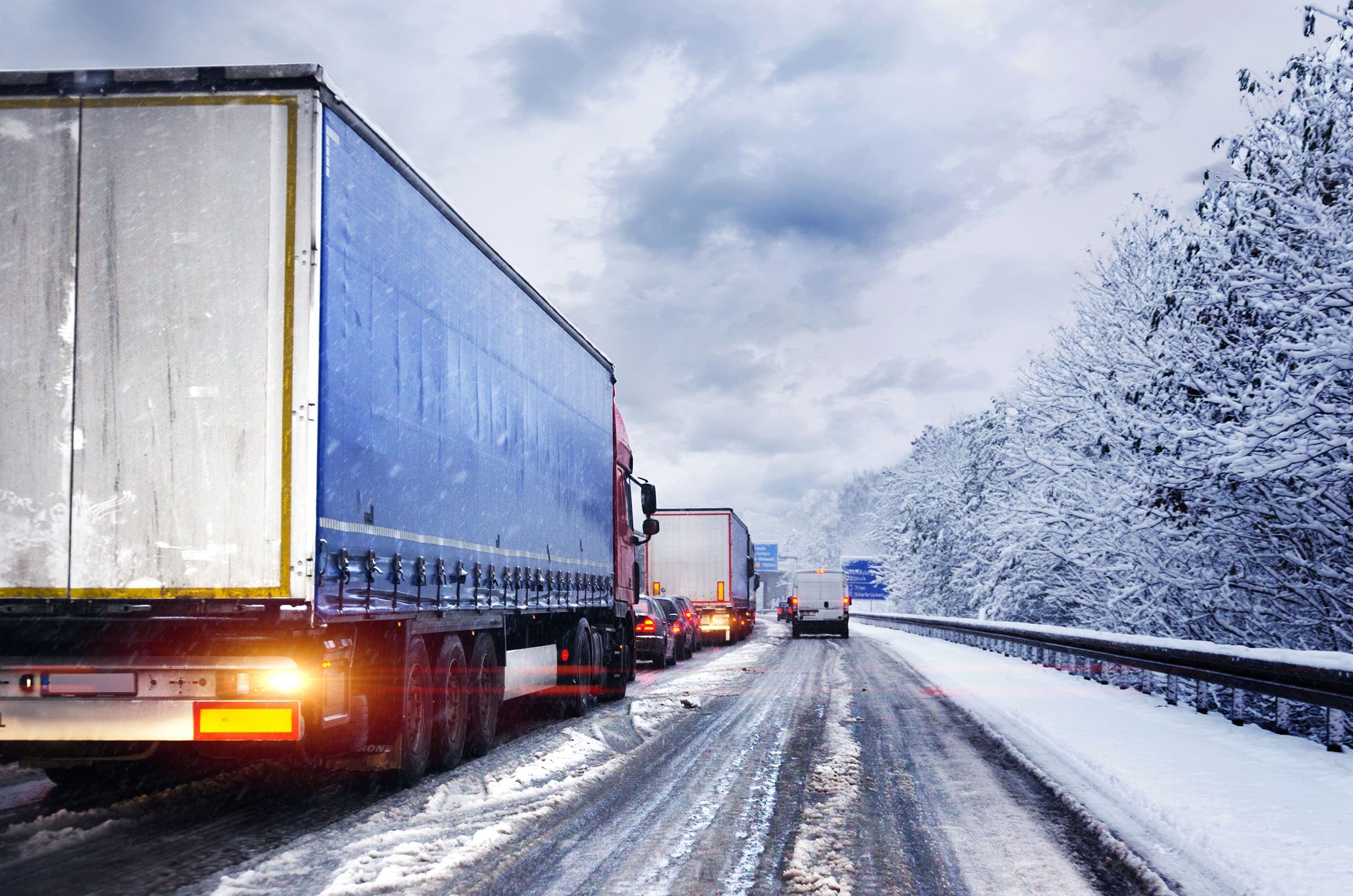How AI in Transportation will Accelerate Strategies in 2026

Trending
Top Posts
Fuel
Why Do Shippers Use The DOE Fuel Surcharge? A History Of The National Fuel Surcharge
5 min read
December 5, 2025
Market Events
How Ukrainian Drone Strikes on Russian Refineries Impact Your Fuel Costs
6 min read
November 20, 2025
Freight
The Definitive Guide on Fuel Management Systems
7 min read
November 11, 2025
3 min read
April 28, 2021

Share:
Governments, corporations, and consumers alike are continuing to pursue greater efforts and policies that support sustainability and lowering their carbon footprints in 2021. The transportation industry is not immune to this trend, and as one of the dirtiest emitting sectors in North America, reporting, creating processes, and adopting technology to support these goals can be a convoluted challenge.
Hear from Brett Wetzel, Senior Director of Applied Knowledge at Breakthrough, and Adrian Gonzalez from Talking Logistics as they dig into what sustainability in commercial transportation strategies looks like, and how to turn future goals into today’s operations. As they work through the nuances of emissions reporting, transparency and a robust understanding of the current clean energy landscape emerged as key elements needed for a successful strategy.
The challenge with gaining visibility to transportation emissions in the supply chain? Scope 3 emissions—the greenhouse gases emitted throughout a good’s value chain that are not directly controlled by a manufacturer. Transportation lies within scope 3 emissions, which raises a lot of questions about who is responsible for managing and reducing those emissions—the manufacturer, or the third-party partner that produces them?
As Wetzel explains, “I think in transportation a big challenge has been the idea of, ‘do you actually have control over somebody else’s assets or somebody else’s decisions out there.’” This relationship has created confusion and lack of universal process in emissions abatement. For shippers looking to dramatically reduce their carbon footprint, it’s a key part of the puzzle to solve.
But its not an impossible problem to solve, and both Wetzel and Gonzalez discussed how shippers can bridge the gap between a conceptual understanding of what needs to happen, and how to achieve success and improvement on the ground today.
Gonzalez posed the question, “how do you get started measuring transportation emissions? What are some of the tools or capabilities required?
Wetzel responded, quite simply, “Understanding ‘what am I trying to measure in the first place?’ There’s a big move to go to what’s known as lifecycle emissions—which is it’s no longer just what’s coming out of the tailpipe, but how was my fuel sourced, how was it created—and its also about more than just carbon dioxide.”
At Breakthrough, we use our applied knowledge team to help shippers understand this question—from the high-level industry basics, all the way down to the unique nuances of the actual energy moving their goods to market, where it comes from, and how it interacts with their network.
Actuals, not averages. Taking a macroscopic view of sustainability is a great place to start, but to drive change and enact more emissions-friendly operations in your organization, shippers need to drill down into the unique aspects of their network footprint.
Tune in to the video above to listen to the conversation and get the full analysis about measuring transportation emissions.

5 min read
December 5, 2025
The DOE fuel surcharge is an outdated, inaccurate method for fuel reimbursement. Learn why it costs you money and discover a modern, market-based alternative.
Read more
6 min read
November 20, 2025
Understand the impact of Ukrainian drone strikes on Russian refineries. Learn why diesel prices are volatile and how to protect your budget from market shocks.
Read more
7 min read
November 11, 2025
Discover how fuel management systems cut costs, track emissions, and improve reimbursement accuracy for modern freight operations.
Read more